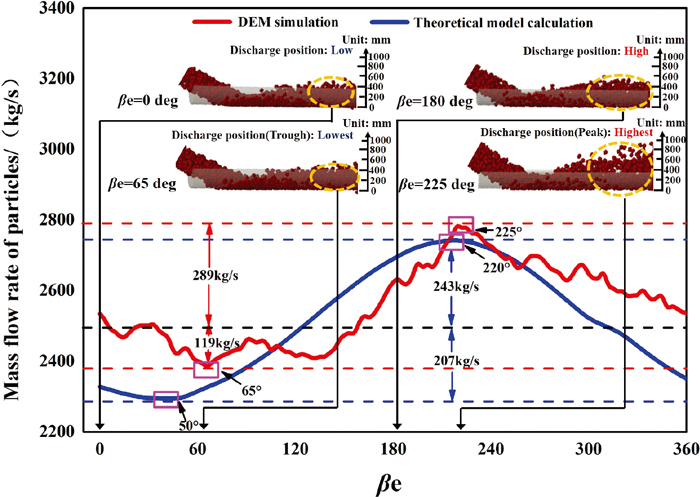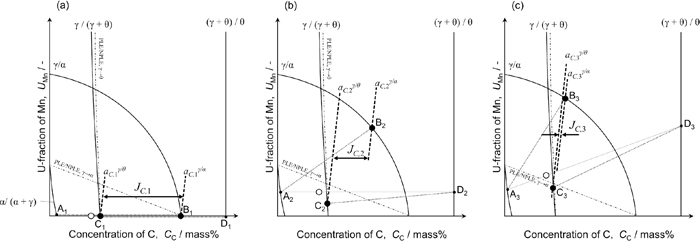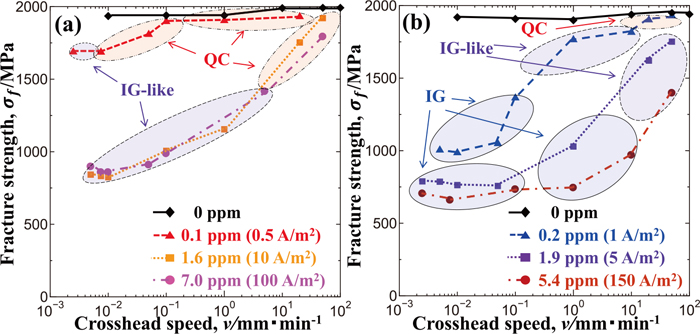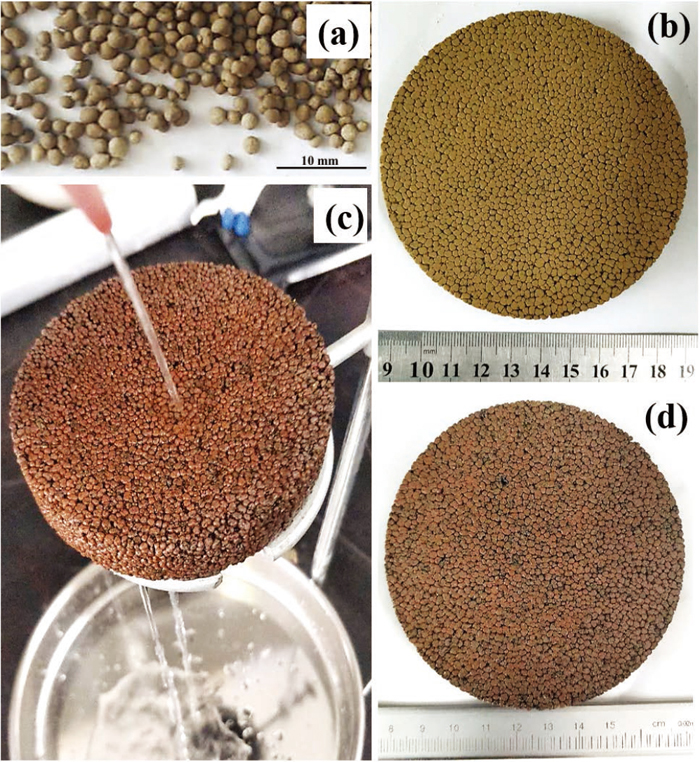59 巻, 9 号
選択された号の論文の29件中1~29を表示しています
- |<
- <
- 1
- >
- >|
Publication Data
-
2019 年 59 巻 9 号 p. Cover-
発行日: 2019/09/15
公開日: 2019/09/15
PDF形式でダウンロード (430K) -
2019 年 59 巻 9 号 p. Editorial-
発行日: 2019/09/15
公開日: 2019/09/15
PDF形式でダウンロード (619K) -
2019 年 59 巻 9 号 p. Contents-
発行日: 2019/09/15
公開日: 2019/09/15
PDF形式でダウンロード (587K)
Regular Articles
Fundamentals of High Temperature Processes
-
原稿種別: Regular Article
2019 年 59 巻 9 号 p. 1519-1526
発行日: 2019/09/15
公開日: 2019/09/15
[早期公開] 公開日: 2019/06/26PDF形式でダウンロード (1329K) HTML形式で全画面表示
Ironmaking
-
原稿種別: Regular Article
2019 年 59 巻 9 号 p. 1527-1533
発行日: 2019/09/15
公開日: 2019/09/15
[早期公開] 公開日: 2019/05/15PDF形式でダウンロード (2564K) HTML形式で全画面表示 -
原稿種別: Regular Article
2019 年 59 巻 9 号 p. 1534-1544
発行日: 2019/09/15
公開日: 2019/09/15
PDF形式でダウンロード (2268K) HTML形式で全画面表示
Steelmaking
-
原稿種別: Regular Article
2019 年 59 巻 9 号 p. 1545-1551
発行日: 2019/09/15
公開日: 2019/09/15
[早期公開] 公開日: 2019/06/15PDF形式でダウンロード (2264K) HTML形式で全画面表示 -
原稿種別: Regular Article
2019 年 59 巻 9 号 p. 1552-1561
発行日: 2019/09/15
公開日: 2019/09/15
[早期公開] 公開日: 2019/06/12PDF形式でダウンロード (2528K) HTML形式で全画面表示
Instrumentation, Control and System Engineering
-
原稿種別: Regular Article
2019 年 59 巻 9 号 p. 1562-1572
発行日: 2019/09/15
公開日: 2019/09/15
PDF形式でダウンロード (2565K) HTML形式で全画面表示 -
原稿種別: Regular Article
2019 年 59 巻 9 号 p. 1573-1581
発行日: 2019/09/15
公開日: 2019/09/15
PDF形式でダウンロード (1027K) HTML形式で全画面表示 -
原稿種別: Regular Article
2019 年 59 巻 9 号 p. 1582-1590
発行日: 2019/09/15
公開日: 2019/09/15
[早期公開] 公開日: 2019/06/14PDF形式でダウンロード (2169K) HTML形式で全画面表示
Chemical and Physical Analysis
-
原稿種別: Regular Article
2019 年 59 巻 9 号 p. 1591-1598
発行日: 2019/09/15
公開日: 2019/09/15
[早期公開] 公開日: 2019/05/15PDF形式でダウンロード (1923K) HTML形式で全画面表示 -
原稿種別: Regular Article
2019 年 59 巻 9 号 p. 1599-1603
発行日: 2019/09/15
公開日: 2019/09/15
PDF形式でダウンロード (785K) HTML形式で全画面表示
Forming Processing and Thermomechanical Treatment
-
原稿種別: Regular Article
2019 年 59 巻 9 号 p. 1604-1613
発行日: 2019/09/15
公開日: 2019/09/15
[早期公開] 公開日: 2019/05/15PDF形式でダウンロード (2965K) HTML形式で全画面表示
Welding and Joining
-
原稿種別: Regular Article
2019 年 59 巻 9 号 p. 1614-1620
発行日: 2019/09/15
公開日: 2019/09/15
PDF形式でダウンロード (1264K) HTML形式で全画面表示
Surface Treatment and Corrosion
-
原稿種別: Regular Article
2019 年 59 巻 9 号 p. 1621-1631
発行日: 2019/09/15
公開日: 2019/09/15
PDF形式でダウンロード (5074K) HTML形式で全画面表示 -
原稿種別: Regular Article
2019 年 59 巻 9 号 p. 1632-1641
発行日: 2019/09/15
公開日: 2019/09/15
PDF形式でダウンロード (1544K) HTML形式で全画面表示 -
原稿種別: Regular Article
2019 年 59 巻 9 号 p. 1642-1649
発行日: 2019/09/15
公開日: 2019/09/15
PDF形式でダウンロード (1730K) HTML形式で全画面表示 -
原稿種別: Regular Article
2019 年 59 巻 9 号 p. 1650-1658
発行日: 2019/09/15
公開日: 2019/09/15
PDF形式でダウンロード (4313K) HTML形式で全画面表示 -
原稿種別: Regular Article
2019 年 59 巻 9 号 p. 1659-1666
発行日: 2019/09/15
公開日: 2019/09/15
[早期公開] 公開日: 2019/06/29PDF形式でダウンロード (841K) HTML形式で全画面表示
Transformations and Microstructures
-
原稿種別: Regular Article
2019 年 59 巻 9 号 p. 1667-1675
発行日: 2019/09/15
公開日: 2019/09/15
PDF形式でダウンロード (3836K) HTML形式で全画面表示
Mechanical Properties
-
原稿種別: Regular Article
2019 年 59 巻 9 号 p. 1676-1682
発行日: 2019/09/15
公開日: 2019/09/15
PDF形式でダウンロード (2050K) HTML形式で全画面表示 -
原稿種別: Regular Article
2019 年 59 巻 9 号 p. 1683-1690
発行日: 2019/09/15
公開日: 2019/09/15
[早期公開] 公開日: 2019/06/25PDF形式でダウンロード (1769K) HTML形式で全画面表示 -
原稿種別: Regular Article
2019 年 59 巻 9 号 p. 1691-1694
発行日: 2019/09/15
公開日: 2019/09/15
[早期公開] 公開日: 2019/07/13PDF形式でダウンロード (515K) HTML形式で全画面表示 -
原稿種別: Regular Article
2019 年 59 巻 9 号 p. 1695-1704
発行日: 2019/09/15
公開日: 2019/09/15
PDF形式でダウンロード (2089K) HTML形式で全画面表示 -
原稿種別: Regular Article
2019 年 59 巻 9 号 p. 1705-1714
発行日: 2019/09/15
公開日: 2019/09/15
[早期公開] 公開日: 2019/06/19PDF形式でダウンロード (5715K) HTML形式で全画面表示 -
原稿種別: Regular Article
2019 年 59 巻 9 号 p. 1715-1722
発行日: 2019/09/15
公開日: 2019/09/15
PDF形式でダウンロード (2878K) HTML形式で全画面表示
Social and Environmental Engineering
-
原稿種別: Regular Article
2019 年 59 巻 9 号 p. 1723-1731
発行日: 2019/09/15
公開日: 2019/09/15
[早期公開] 公開日: 2019/04/24PDF形式でダウンロード (6599K) HTML形式で全画面表示
Note
Ironmaking
-
原稿種別: Note
2019 年 59 巻 9 号 p. 1732-1734
発行日: 2019/09/15
公開日: 2019/09/15
PDF形式でダウンロード (465K) HTML形式で全画面表示
- |<
- <
- 1
- >
- >|







